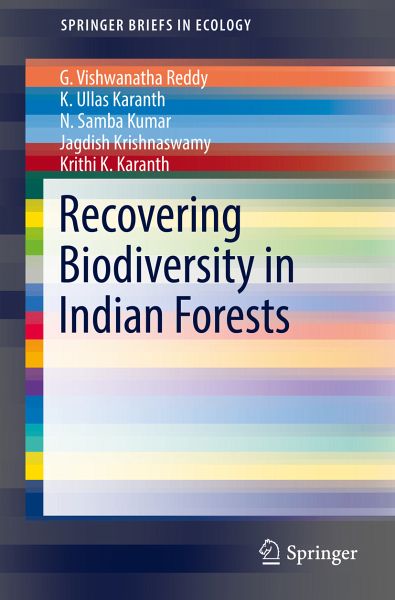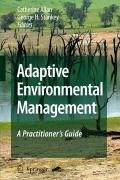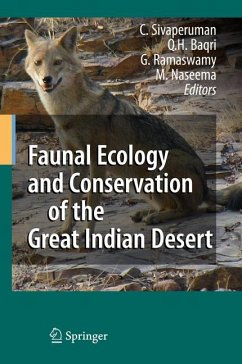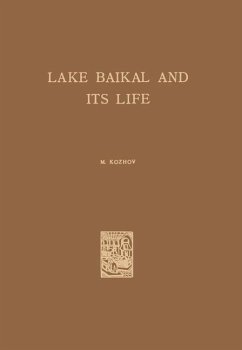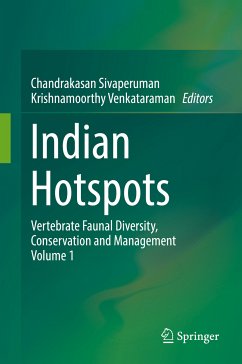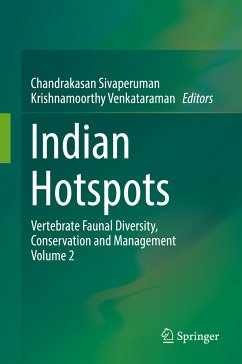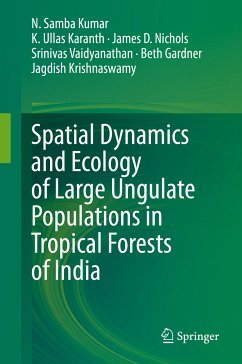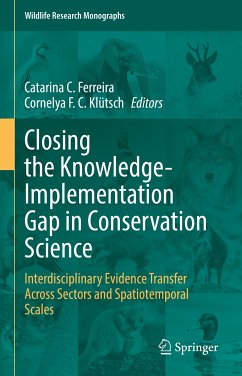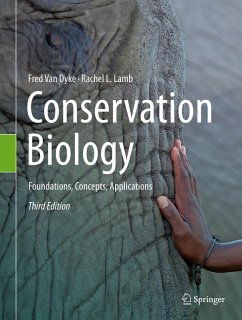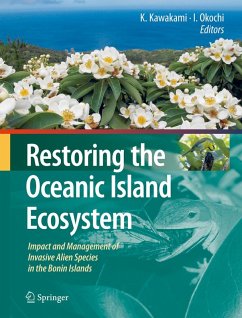G. ViswanathaReddy is the Additional Principal Conservator of Forests and Chief Wildlife Warden, Department of Forest, Government of Rajasthan. He has more than 25 years of experience in protected area management and conservation of wildlife. He is also one of those rare park managers who is deeply interested and encouraging of research on wildlife. Dr. Reddy received his doctoral degree from Manipal University, in 2011, and has multiple peer-reviewed scientific publications. Dr. Reddy also has international experience in managing parks, having served as an Ecosystem Manager in Indonesia, as part of the World Bank-funded Aceh Forests and Environment Project. He is also well renowned for his efforts to improve protection in Ranthambhore Tiger Reserve, where he served as a Deputy Conservator of Forests and Deputy Field Director between 1997 and 2002, and subsequently as Field Director (2002-2003). In this capacity, he improved the management of the park, augmented its eco-tourism capability through engagement of local residents, stopped destructive mining practices within the park, and facilitated voluntary resettlement of families living within the park. He has been recognized for his hard work and effective conservation through various awards, including the Carl Zeiss Wildlife Conservation Award, Eco-Warrier Award, from Earth Foundation Matters, and a Merit Award from the Government of Rajasthan. He has also participated in multiple international conferences and workshops on conservation of tigers and other wildlife.
K. Ullas Karanth is the Director of Science - Asia, Wildlife Conservation Society, and a globally renowned expert on tiger ecologyand conservation. He has over two decades of experience in implementing successful research and conservation programs in the Western Ghats. He has more than 100 scientific publications, and has served as an expert on a number of wildlife boards. His pioneering work on using camera trapsto monitor tiger population abundance has been adopted worldwide for a number of species, including jaguars, and nationally, for counting tigers within major source populations in the country. Dr. Karanth has also penned a number of popular articles aimed at making science and the complexities of wildlife conservation accessible to the layman. He serves as an editor on a number of scientific journals of international repute, and is a Fellow at the Indian Academy of Sciences. Dr. Karanth is an Adjunct Professor at the University of Florida, University of Minnesota, Tata Institute of Fundamental Research-National Centre for Biological Sciences, and Manipal University. He has received numerous awards, including the prestigious Padmashree, a National Civilian Honour conferred by the President of India, and the Rajyothsava Award for environmental and wildlife conservation by the Government of Karnataka.
N. Samba Kumar is the Additional Director - Science and Training, Wildlife Conservation Society, India Program. With over 40 scientific publications, Dr. Kumar is an acclaimed scientists specializing in ungulate biology and conservation. His knowledge of sampling protocols for assessing population status of large mammals is unrivalled, while his doctoral thesis, submitted to Manipal University, involves the development of advanced methods that are sure to change our ability to understand the dynamics of ungulate populations in a number of landscapes throughout India. Dr. Kumar has mentored and trained a number of amateur wildlife enthusiasts, a number of whom have gone on to embrace the field of wildlife conservation; some of them are working professionals in the field today. He has also trained a number of forest department staff, and interacted with park managers to a large extent, working towards integration of science and park management. Dr. Kumar has received a number of awards, including the Carl Zeiss Wildlife Conservation Award and has attended numerous international and national conferences and workshops on wildlife research and conservation.
JagdishKrishnaswamy is the Convenor and Senior Fellow at the SuriSeghal Centre for Biodiversity and Conservation, Ashoka Trust for Research in Ecology and the Environment. After completing his doctorate from the Duke University in 1999, Dr. Krishnaswamy has successfully implemented a number of research programs throughout India, and in addition, has advised numerous scientists in the field. As an affiliate faculty at the National Centre for Biological Sciences, Dr. Krishnaswamy has taught statistics, landscape ecology and hydrology, at the post-graduate level. He also teaches courses at the National Institute of Advanced Studies and the Ashoka Trust for Research in Ecology and the Environment. He has published over 50 scientific peer-reviewed articles, and has served on the editorial board of international journals. Dr. Krishnaswamy's in the field of hydrology, as related to wildlife conservation, is path-breaking, and his contributions have led to various on-ground conservation actions. He is a member of the Gharial Conservation Alliance, which is an international alliance dedicated to saving the species.
Krithi K. Karanth is an Associate Conservation Scientist with the Global Conservation Program, Wildlife Conservation Society, New York. She is also a recipient of the Ramanujan Fellowship offered by the Department of Science and Technology, Government of India. Dr. Karanth's interests span issues involving conservation of wildlife outside protected areas, tourism initiatives for conservation, and voluntary resettlement of people from forest interiors. She is a prolific writer with over 30 peer-reviewed scientific publications, and more than 30 popular articles and blogs. She is the 10,000th grantee and explorer of the National Geographic Society, and was recognized for her achievements as the Young Global Leader and one of 15 women changing the world, at the World Economic Forum in 2015, an INK fellow in 2013, and Distinguished Alumna at both the Yale Tropical Resources Institute and University of Florida. She is an Adjunct Assistant Professor at the Duke University and Affiliate Teaching Faculty at the National Centre for Biological Sciences. She has also mentored a number of graduate students and young professionals in the field.
